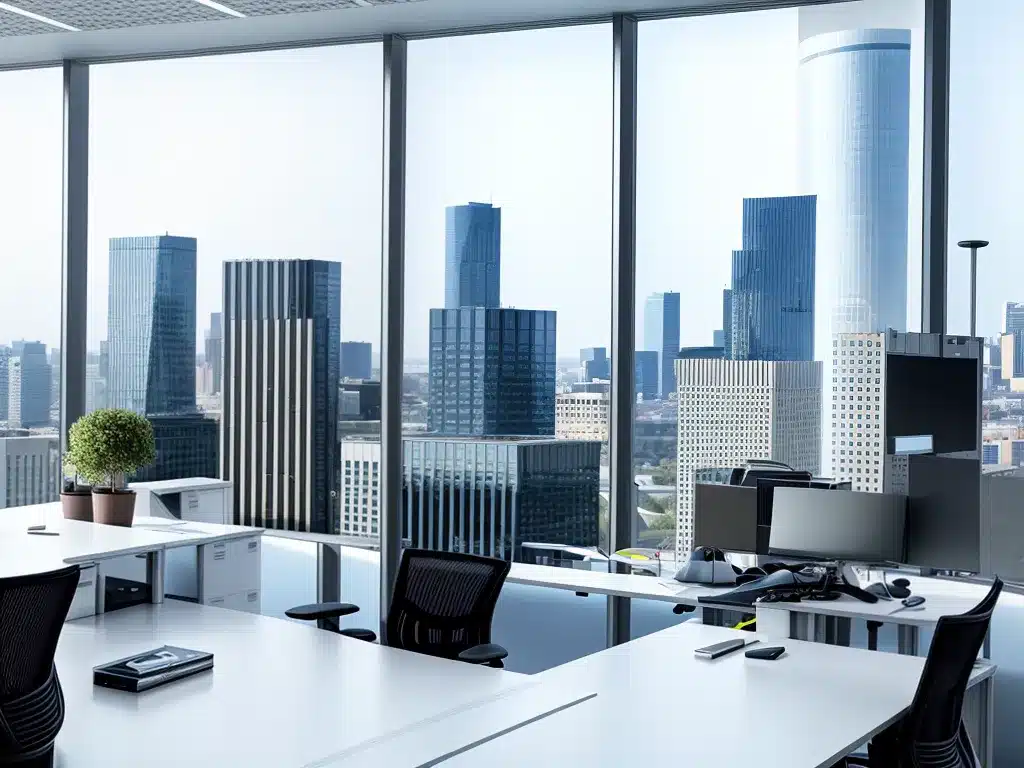
Building the Smart Office of 2024
The workplace of the future promises exciting innovations that will transform how we work. As someone interested in creating a smarter office, here is an in-depth look at the technologies and trends that will likely shape the office of 2024.
Flexible Workspaces
Open floor plans have been popular for some time, but by 2024 we’ll see workspaces that offer even more flexibility. Key trends include:
Hot Desking
Rather than assigned desks, employees can sit anywhere in communal spaces. This enables collaboration and accommodates mobile workers. Hot desking will be facilitated by cloud storage so workers can access their files from any device.
Modular Furniture
Modular furniture like benches, boards on casters, and reconfigurable meeting pods allow teams to quickly rearrange spaces to suit changing needs. These agile workspaces promote creativity and cross-functional problem solving.
Workspaces on Demand
Employees will be able to instantly book different types of workspaces – from quiet pods for focused work to large rooms for collaborative sessions – through integrated software platforms. Providing workspaces on demand caters to diverse needs.
Healthy Buildings
Sustainability and wellness will be priorities in the smart office. Features that promote occupant health include:
Advanced HVAC Systems
Heating, ventilation and air conditioning (HVAC) systems will monitor occupancy levels and environmental quality in real-time. They’ll self-adjust throughout the day to optimize temperature, airflow and filtration.
Natural Lighting and Greenery
Exposure to daylight and indoor plants boosts wellbeing. Smart buildings will be designed with ample natural light via windows or skylights. Greenery will be incorporated through living walls, flower beds and potted plants.
Sit-Stand Desks
Height adjustable sit-stand desks will be the norm, allowing workers to alternate between sitting and standing. This improves posture, engagement and health. Desks may even feature built-in sensors that remind users to change position.
Automated Technologies
Artificial intelligence and automation will drive efficiencies while enabling employees to focus on higher value work:
Smart Meeting Spaces
AI assistants will interact with meeting room equipment like video conferencing systems to get meetings started instantly and glitch-free. Voice commands, facial recognition and gesture control provide seamless, intuitive control.
Automated Infrastructure
Building management systems will control lighting, temperature, parking systems and more based on predictive algorithms. Maintenance needs like air filter changes can also be handled autonomously. This automation maximizes efficiency.
AI-Powered Services
Virtual assistants will be integrated into the workplace to help with tasks like scheduling meetings based on calendars, transcribing notes, answering employee questions and even providing recommendations. AI services remove administrative burdens.
Security and Access Control
With hybrid work becoming more prevalent, advanced security technologies will be critical in the office of the future:
Biometric Authentication
Access to the workplace and specific areas will be secured through biometrics like fingerprint or iris scanning. Facial recognition can also be used. This enhances security and eliminates the need for keys or access cards.
Temperature Scanning
Thermal cameras capable of detecting fevers as people enter turnstiles can help monitor population health and prevent the spread of illness. Integrated systems allow for contactless access.
Visitor Management
Solutions for visitor management will encompass online registration, automated notifications when guests arrive and badging integrated with access control. This will provide oversight of everyone entering the premises.
The office of 2024 promises to be smarter, more flexible, more sustainable and more secure. By leveraging emerging technologies and trends, companies can design optimal workspaces to attract talent and enable their people to thrive in a more connected working world. While offices will look different, their fundamental role as hubs for meaningful human connection and collaboration will endure.












